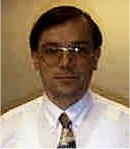| | | Plenary Lecture:
Low Dimensional Nonlinear Thermomechanical Models
Describing Phase Transformations and their Applications

Professor Roderick Melnik
Tier I Canada Research Chair
WLU, Waterloo, ON, Canada
E-mail: rmelnik@wlu.ca
Abstract: In this plenary talk we focus on the development of low
dimensional approximations to coupled nonlinear systems of partial
differential equations (PDE) describing phase transformations. The methodology
is explained on the example of nonlinear ferroelastic/thermoelastic dynamics.
We start from the general three-dimensional Falk-Konopka model and with the
center manifold reduction obtain a Ginzburg-Landau-Devonshire one-dimensional
model. The Chebyshev collocation method is applied for the numerical analysis
of this latter model, followed by the application of an extended proper
orthogonal decomposition. Finally, we present several numerical results where
we demonstrate performance of the developed methodology in reproducing
hysteresis effects occurring during phase transformations and provide a survey
of related methodologies and applied mathematical problems arising in this
context.
Current project is a joint work with O. Tsviliuk and L. Wang.
Brief Biography of the Speaker:
Roderick Melnik is a Full Professor at the Wilfrid Laurier University in
Waterloo, Canada. He is a Tier I Canada Research Chair in Mathematical
Modelling. Before moving to Canada, Professor Melnik held senior professorial
and research positions in the USA, Europe, and Australia. He was also a
visiting fellow at the Isaac Newton Institute of the University of Cambridge ,
at the Institute for Mathematics and its Applications of the University of
Minnesota and other research institutions in Europe, North America, and
Australia. Professor Melnik's major results are in the development, analysis
and applications of mathematical models based on partial differential
equations and computational mathematics, focusing on coupled dynamic
phenomena, systems, and processes. The areas of his research contributions
include computational physics, applied numerical analysis, chemistry, and
biology, non-smooth control, and stochastic differential equations. Over the
past years, some of his main contributions have been to the development and
applications of mathematical models in the area nano- and bionano- sciences
with particular emphasis on the analysis of coupled multiscale phenomena,
processes, and systems. This includes his contributions to the analysis of
coupled effects in low-dimensional nanostructures, such as quantum dots, in
bio-inspired and in biological systems.
| | |